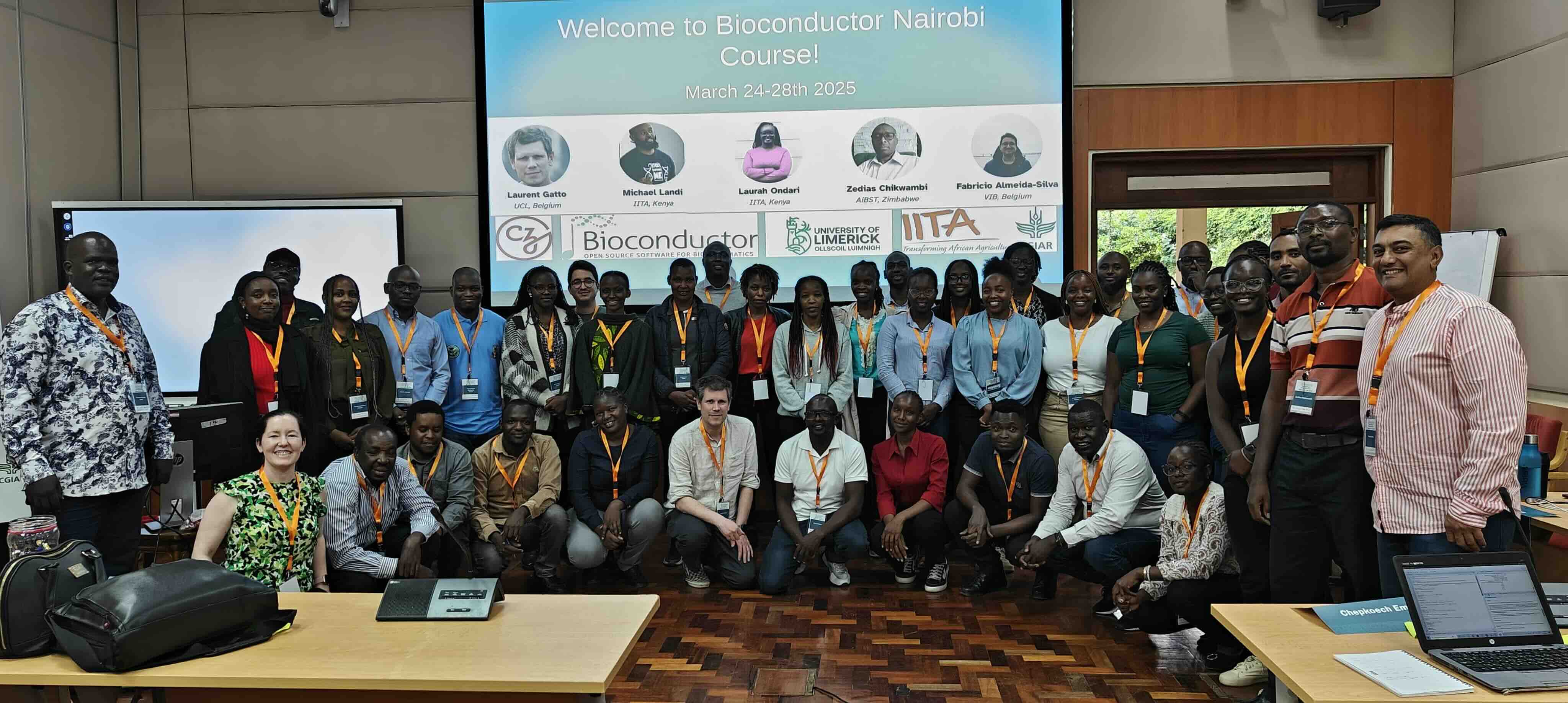While threats to national and international heritage as a result of geopolitical tensions and cybersabotage have increased significantly, Dutch heritage institutions are insufficiently prepared for disasters, digital or physical attacks.
Postagens de Rogue Scholar

In March 2025, Bioconductor marked an exciting milestone—our first in-person course on the African continent. Hosted by the International Institute of Tropical Agriculture (IITA) in Nairobi, this five-day workshop brought together 32 researchers for hands-on training in genomic data analysis using R and Bioconductor.

There were a few stickers on the lid, but why does my laptop look like this now? In short, I'm learning to touchtype a non-qwerty layout. My Japanese MacBook keyboard has 34 stickers for a custom layout I've been using a UK layout Microsoft Natural Ergonomic Keyboard 4000 for twenty years now. I wrote my PhD thesis on one (using the LaTeX typesetting language), and got a second matching one when I started working as a Post Doc.
Registration is now open for the PKP 2025 AGM! Discover the latest in open scholarly publishing, connect with the community, and shape the future of open access. Please join us on Tuesday, June 17th, 2025, at 9 AM PDT. The Public Knowledge Project (PKP) continues to thrive thanks to the collaboration, innovation, and global support of the international community.

This overview is based on Open Access data for publications from 2024 only, providing a snapshot rather than a trend analysis. The data include four document types—articles, Books, Book Chapters, and Reviews—to more accurately reflect disciplinary publishing cultures. Data was taken from OpenAlex on May 14, 2025.

Chapter 6 of the NSCEB Final Report
Open Divide, Critical Studies on Open Access1 lautete der Titel eines Sammelbandes, den Ulrich Herb (Universität Saarland) gemeinsam mit seinem Kollegen Joachim Schöpfel (Universität Lille) 2018 herausbrachte. Sieben Jahre später unternehmen die ehemaligen Herausgeber nun zusammen mit Niels-Oliver Walkowski (Universität Luxemburg) wieder eine kritische Bestandsaufnahme.
The two previous posts, on the topic of anomeric effects in 7-membered sulfur rings illustrated how orbital interactions between the lone pairs in the molecules and S-S bonds produced widely varying S-S bond lengths in the molecules, some are shorter than normal (which is ~2.05Å for e.g. the S8 ring) by ~ 0.1Å and some […]

I know you are conditioned to think that what you are researching has to be novel. But let’s think about it for a second.

In a climate of funding uncertainty, what if the most cost-effective investments in global health weren’t about supplies or infrastructure, but human networks that turn learning into action? In this short review article, we explore how peer learning networks that connect human beings to learn from and support each other can transform health outcomes with minimal resources.
Josh Millar has just released the latest survey paper he lead on energy-aware approaches to optimise deep-learning training and inference on embedded devices, such as those benchmarked in "Benchmarking Ultra-Low-Power µNPUs" recently. Any comments, please do let any of us know!